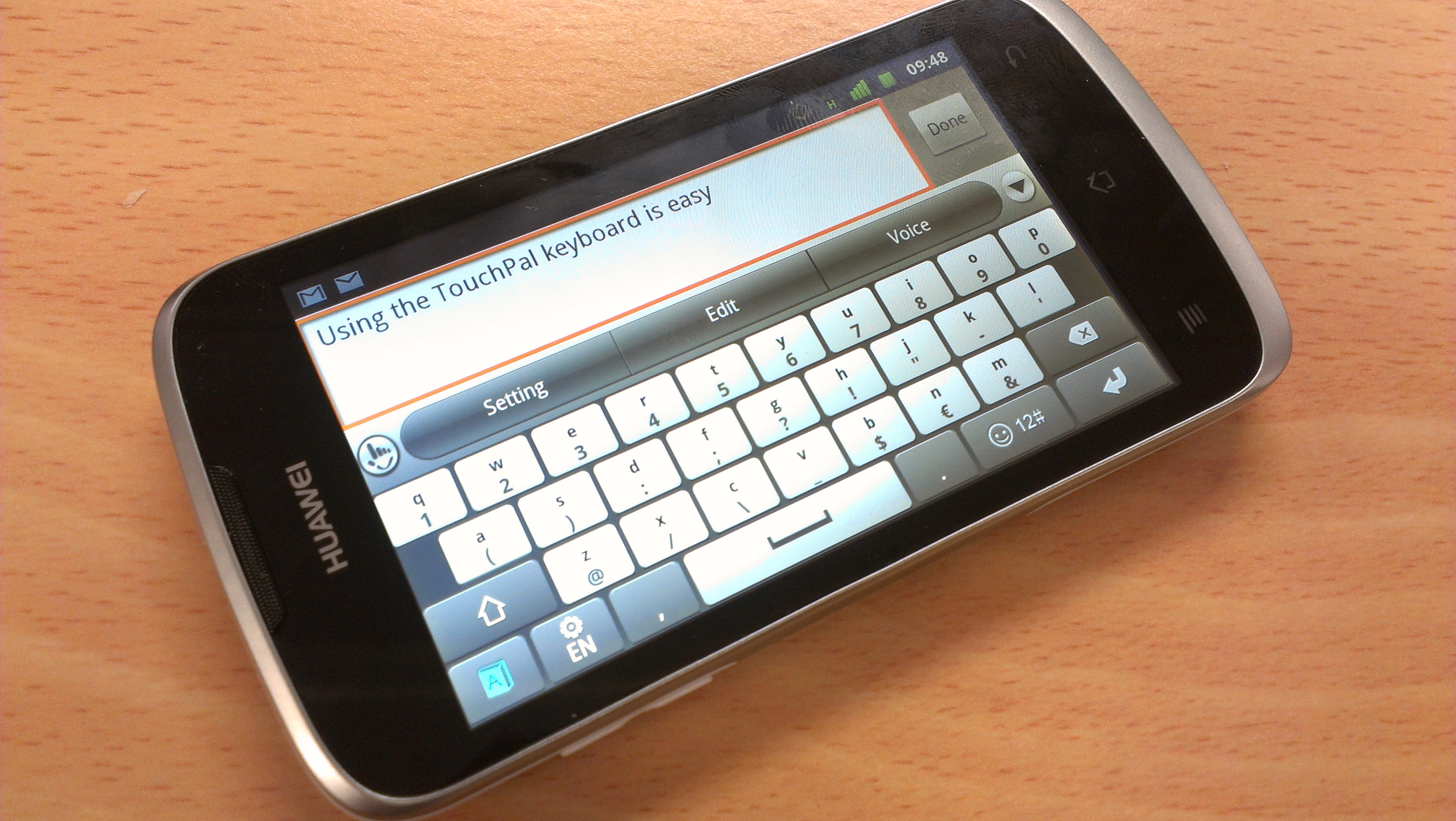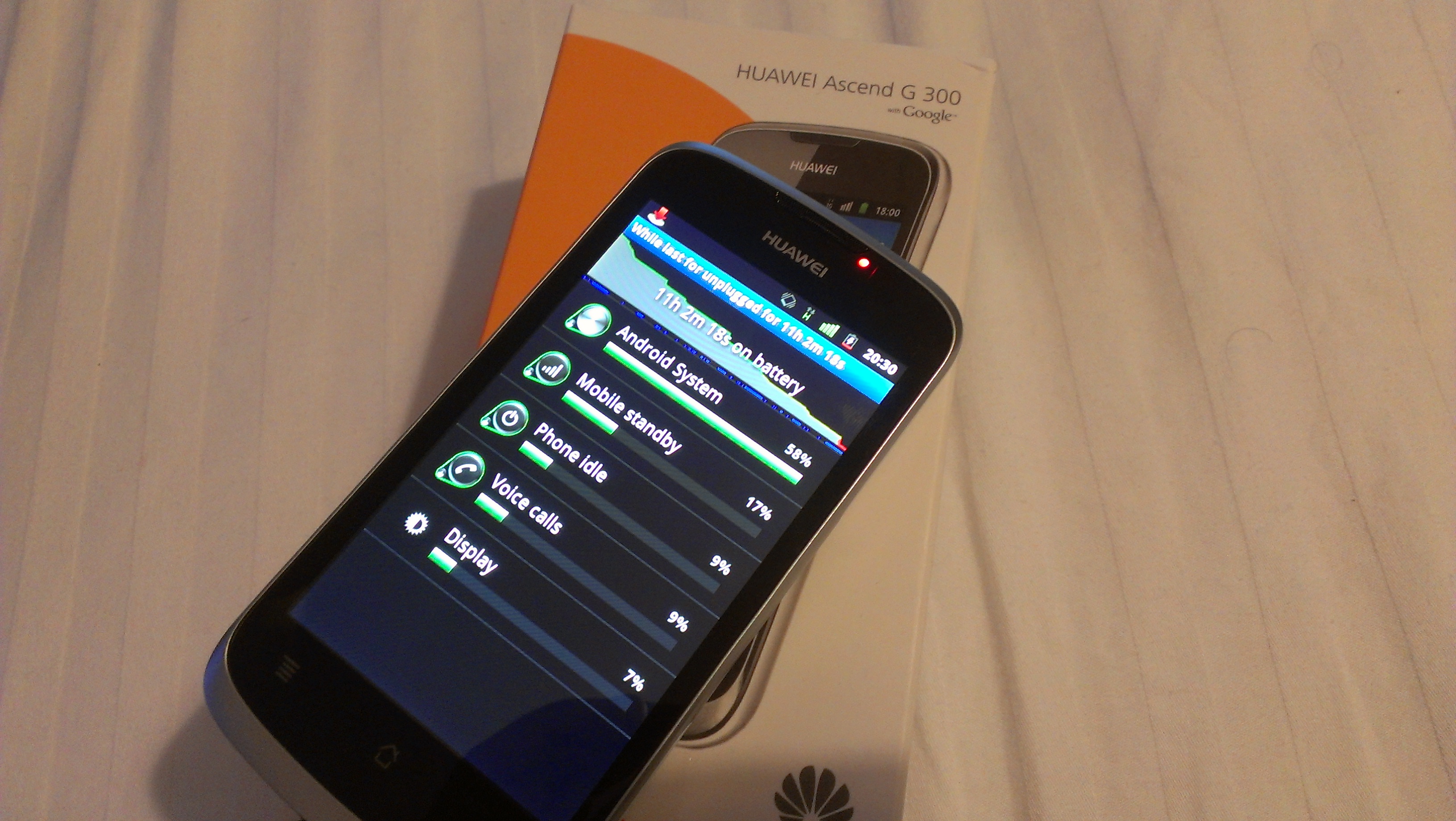Huawei Ascend G 300 review
This £100 Android smartphone comes with meaty specifications including a 4in display, 1GHz Qualcomm processor, 512MB of RAM and 5-megapixel camera. Despite its budget nature, and the use of Android 2.3, Huawei hasn't compromised on performance or battery life.
At just £100 or free on a £15.50 contract, pound-for-pound, the Ascend G 300 is one of the best Android devices on the market. Huawei gets all the basics right and we can look past the Android Gingerbread 2.3 interface and mediocre camera when the performance is this good.
Keyboard
Business users who regularly fire off emails, browse the internet or look over documents on the move need an easy to use keyboard. Huawei has nailed this feature by including the TouchPal keyboard.
Commonly used punctuation and symbols are located on the primary keyboard, so you only need to switch between layouts when using emoticons.
Every key has a multiple function. By swiping down on the letter g', you will be able to input '?', for example. A quick swipe up on the same letter will give you a capital G'. This may sound trivial, but these little shortcuts save time and ensure correct punctuation, especially when you are correcting text.

The TouchPal keyboard makes excellent use of swiping gestures
It is possible to customise the layout too. The QWERTY keyboard is displayed as standard, but it is also possible to revert to a traditional numerical layout or one that puts letters together in pairs. These alternative layouts can be accessed by carrying out a pronounced sideways swipe.
The stock Android keyboard is available to use, but we made less mistakes with TouchPal and left this as the default keyboard. It is one of the best methods of input we have used on a mobile device along with the stock HTC and Windows Phone keyboards.
Battery life
Battery life is another key feature, and the G 300 powered through the working day.
Huawei includes a meaty 1500mAh battery, 100mAh larger than the one found in the 4in Motorola Motoluxe. We ran it through our real-world usage test to see if it could break the 12-hour barrier. Our tests included timed activities such as browsing the web to watching a 40 minute episode of a TV show.

The display only used up 7 per cent of the battery during a working day
Corporate email, Gmail and Twitter accounts were set to push content throughout the day. Brightness was cranked up to the maximum level, Wi-Fi remained off and battery saver was turned off.
From a full charge at 8am, the G 300 was down to 16 per cent by 5:30pm. The juice finally ran out at 7:00pm on the commute home, giving the device a total uptime of exactly 11 hours.
Interestingly, the Android OS was responsible for the biggest drain on the battery - sucking up 58 per cent during the day. Mobile Standby took up 17 per cent, phone idle and voice calls each used up 9 per cent. Surprisingly, the display only used 7 per cent throughout the day. In comparison, Super AMOLED and Super LCD screens used on high-end devices usually suck up 60 per cent of the battery.
By turning down the brightness and using the power saving mode, it is possible to break the 12 hour barrier. Users can also carry a spare and replace the battery on long trips.
Get the ITPro daily newsletter
Sign up today and you will receive a free copy of our Future Focus 2025 report - the leading guidance on AI, cybersecurity and other IT challenges as per 700+ senior executives
-
 InfoComm 2025 Best of Show Awards are now open for entries
InfoComm 2025 Best of Show Awards are now open for entriesSubmissions are open until the closing deadline of May 30
By ITPro Published
-
 M&S calls in NCSC after 'cyber incident' disrupts customer payments, online orders
M&S calls in NCSC after 'cyber incident' disrupts customer payments, online ordersNews Retail giant Marks & Spencer (M&S) has revealed it has been dealing with a “cyber incident” in recent days and apologized to customers amid disruption complaints.
By Ross Kelly Published
-
 Microsoft says workers should believe the hype with AI tools: Researchers found Copilot users saved three hours per week sifting through emails, gained more focus time, and completed collaborative tasks 20% faster
Microsoft says workers should believe the hype with AI tools: Researchers found Copilot users saved three hours per week sifting through emails, gained more focus time, and completed collaborative tasks 20% fasterNews Using AI tools paid dividends for some workers, but alternative research shows it could create problems for others down the line.
By Ross Kelly Published